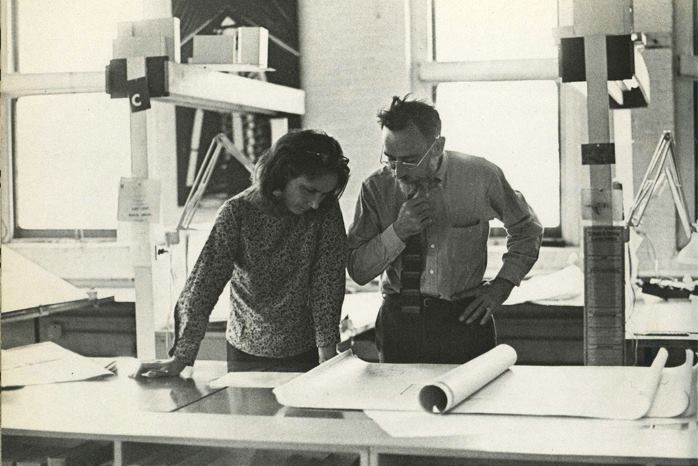Commodity, firmness, and delight. These are three words that the late Judith Edelman quoted from Vitruvius in 2012 to describe the design principles underpinning her work at Edelman Sultan Knox Wood/Architects (ESKW/A), the firm she co-founded in 1960. “I think structure is fascinating and … space is the best medium to work with that I can think of,” she said.
Edelman, who died of a heart attack on Oct. 4 at the age of 91, is known best, perhaps, for her groundbreaking work as a woman in the architecture profession. A fellow of the AIA, she was one of the first females to earn a degree in architecture—a B.Arch from Columbia University in 1946—as well as the first woman elected to the executive committee of the New York Chapter of the American Institute of Architects, in 1971. A year later, she founded the Alliance of Women in Architecture.
In 1973, she challenged the AIA to help advance the position of women in architecture. As Gabrielle Esperdy reported in Places journal, Edelman co-authored “Status of Women in the Architectural Profession,” a resolution for the AIA. Its preamble tethered the women’s rights movement to the architectural profession: “In society at large we are in the midst of a struggle for women’s rights brought into sharp focus by the current feminist movement. AIA and the architectural profession have not responded to this climate of change.” This challenge continues today, as reflected in our coverage of the Equity by Design symposium last week.
“Judith was a pioneering leader of the women’s movement,” says Beverly Willis, FAIA, who started Willis and Associates, Inc. Architects, which was the only female-led firm in San Francisco for many years. “She was also a pioneer in the movement to acknowledge the word ‘feminist.’” Willis, 86, first met Edelman about 12 years ago when she was starting the Beverly Willis Architecture Foundation in New York. “What I appreciated [about Judith] was her bluntness,” she says. “People tell me I’m blunt, too. It’s nice to know exactly how someone feels and thinks. It’s a lot of work trying to read between the lines.”
Born in Brooklyn, N.Y., in 1923, Edelman’s ambition was evident during her time at Columbia. Her class had several women, owing to World War II, and Edelman said the architecture professors were openly disdainful of the female students. The curriculum wasn’t challenging enough, so Edelman and her classmates spoke up. In a blog post on her firm’s website, she wrote, “We said, ‘We didn’t come here to learn how to make Indian ink washes of Greek details; we came here to learn how to be architects.’” The curriculum changed after that.
She married Harold Edelman, who studied architecture at Cornell University, in 1947. With Stanley Salzman, the three started the firm that would become ESKW/A. Harold passed away in 1999.
Much of the coverage on Edelman over the years focused on her advocacy for women in the field of architecture, and rightly so. But there was, too, her acumen and legacy as an architect. “That’s the other thing that we women have had to work through,” Willis says. “Nobody talked about our work. It was always about what we were doing in terms of being an activist.”
Edelman’s politics and activism carried over into the types of projects she championed and designed, notably affordable housing. She was a modernist, and said that Robert A.M. Stern, FAIA, once told her during a jury for an award that she was “nothing but a god damned unreconstructed Modernist.” The award-winning 9G Cooperative Apartments project, which used nine contiguous brownstones in New York’s Upper West Side to create new housing in the 1960s, has been lauded as an early example of how adaptive re-use can preserve existing urban infrastructure. The Phelps House, which she completed in 1983, created 169 housing units and a community center for the elderly with a HUD grant.
Over the years, Edelman’s projects have earned awards from the City Club of New York, the Municipal Art Society, and the AIA, among others. In 1990, she and Harold were given the AIA New York Chapter’s Andrew J. Thomas Pioneer in Housing award.
One of Edelman’s favorite projects was the private residence that she helped design for Harold’s sister in Bethesda, Md. Located on a sloping and wooded site, the house reflects Edelman’s life-long love of defining space through architecture. “It had great, great spaces and consistency of materials,” she said on her firm’s blog.
Willis says that Edelman opened doors for people both through her architecture and activism. “Her efforts made a measureable difference,” Willis says, “and we, as women, and the profession as a whole owe her a great deal of gratitude.”
